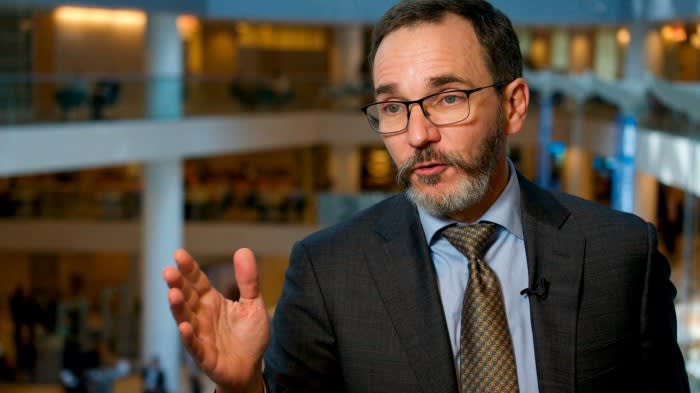Biden Administration Sets New Federal Rule to Limit Silica Dust Exposure in Mining Operations
New federal rule lowers the permissible level of silica dust in mining operations, safeguarding workers and saving lives
The Biden administration, in a significant move to protect the health and safety of American miners, has agreed to limit workers’ exposure to toxic silica dust, a byproduct commonly found in U.S. mining operations. The federal rule, announced on Tuesday, enforces a reduction in the allowable level of silica dust emitted during mining activities, including coal and other ore drilling.
The introduction of this rule, cited as a major step in improving public health, is estimated to prevent approximately 1,067 deaths and 3,746 silica-related illnesses, according to the U.S. Department of Labor. The significance of this regulation has been acknowledged by Chris Williamson, the assistant secretary for the Mine Safety and Health Administration, as a long-overdue measure that is much deserved by the nation’s miners. Williamson declared, “No miner should ever have to sacrifice their health or lungs to provide for their family.”
For several decades, the detrimental consequences of inhaling silica dust, a known carcinogen and otherwise referred to as crystalline silica, have been well-documented. Exposure to this hazardous substance leads to permanent scarring in the lungs and a reduction in lung capacity. Various pulmonary conditions, collectively known as pneumoconioses, can arise, and unfortunately, they are both incurable and fatal in nature. Silica and coal dust exposure has also been linked to black lung disease, coal workers’ pneumoconiosis, lung cancer, chronic bronchitis, and kidney disease.
Facing New Respiratory Challenges
Recent advancements in drilling technologies have resulted in younger workers penetrating geological formations that contain silica while accessing thinner coal seams. These cutting-edge drilling techniques have inadvertently increased workers’ exposure to dangerous silica particles, causing severe respiratory issues to develop at younger ages.
Federal Rule Enhancements to Ensure Long-term Health and Well-being
The final rule, first proposed by government regulators in July, mandates a reduction in silica dust levels to a maximum threshold of 50 micrograms per cubic meter for an eight-hour workday. Notably, an action level at 25 micrograms has been identified to proactively address potential issues. To enforce compliance, mine operators are required to employ engineering controls that minimize silica exposure. These operator-controlled measures include regular dust sampling and comprehensive environmental evaluations. The quantification analogy for this reduction framework notes that the allowed level of fine dust should be equivalent to a single particle the size of a short strand of hair, occurring only once daily within the confined space of a cardboard box.
The rule ensures that mine workers’ respiratory health is adequately protected by reducing silica dust exposure and adopting rigorous medical surveillance programs. Free periodic health examinations, supported by mine operators, will be introduced in an effort to detect illnesses at early stages with no cost borne by the miners themselves. These adjustments are reminiscent of the established federal Coal Workers’ Health Surveillance Program, aiming to safeguard and prioritize the well-being of miners.
United Mine Workers of America’s Support for the Rule
The United Mine Workers of America, representing the interests of miners, has praised the new rule’s positive impact. The reduced silica dust exposure levels and fortified disease detection procedures are deemed integral to preserving the short- and long-term health of miners. Cecil Roberts, the president of the union, has emphasized the significance of consistent safety measures, stating that “our focus shifts to holding mining companies accountable.”
Expansion of Protections and Future Standards
Acknowledging the need for similar safeguards in other sectors, federal officials are advocating for limits on silica dust in metal and nonmetal operations. Measures are also being explored to facilitate the establishment of medical surveillance programs for all miners, consistent with periodic health exams. While the number of coal workers in the mining industry is declining, with an estimated 55,000 active workers nationwide, it is crucial to note that the scope of the rule extends to nearly 200,000 workers in metal, nonmetal, stone, sand, and gravel mining operations.
Broader Respiratory Protection Standards and Effective Dates
Moreover, the new rule addresses the need for updated respiratory protection standards for workers in addition to silica dust. Diesel particulate matter and asbestos are among the other hazardous substances that the rule applies to.
The federal limits on silica dust will be officially published in the Federal Register on Thursday, with it taking effect in coal mine operations one year from the date of publication. Metal and nonmetal mining operations will be subject to the rule in 2026.

/img-s3.ilcdn.fi/1f702148259d70940da5855601b57a0069bf8d8f731f7b8bbfc4f5da09676e4d.jpg?resize=150%2C150&ssl=1)
